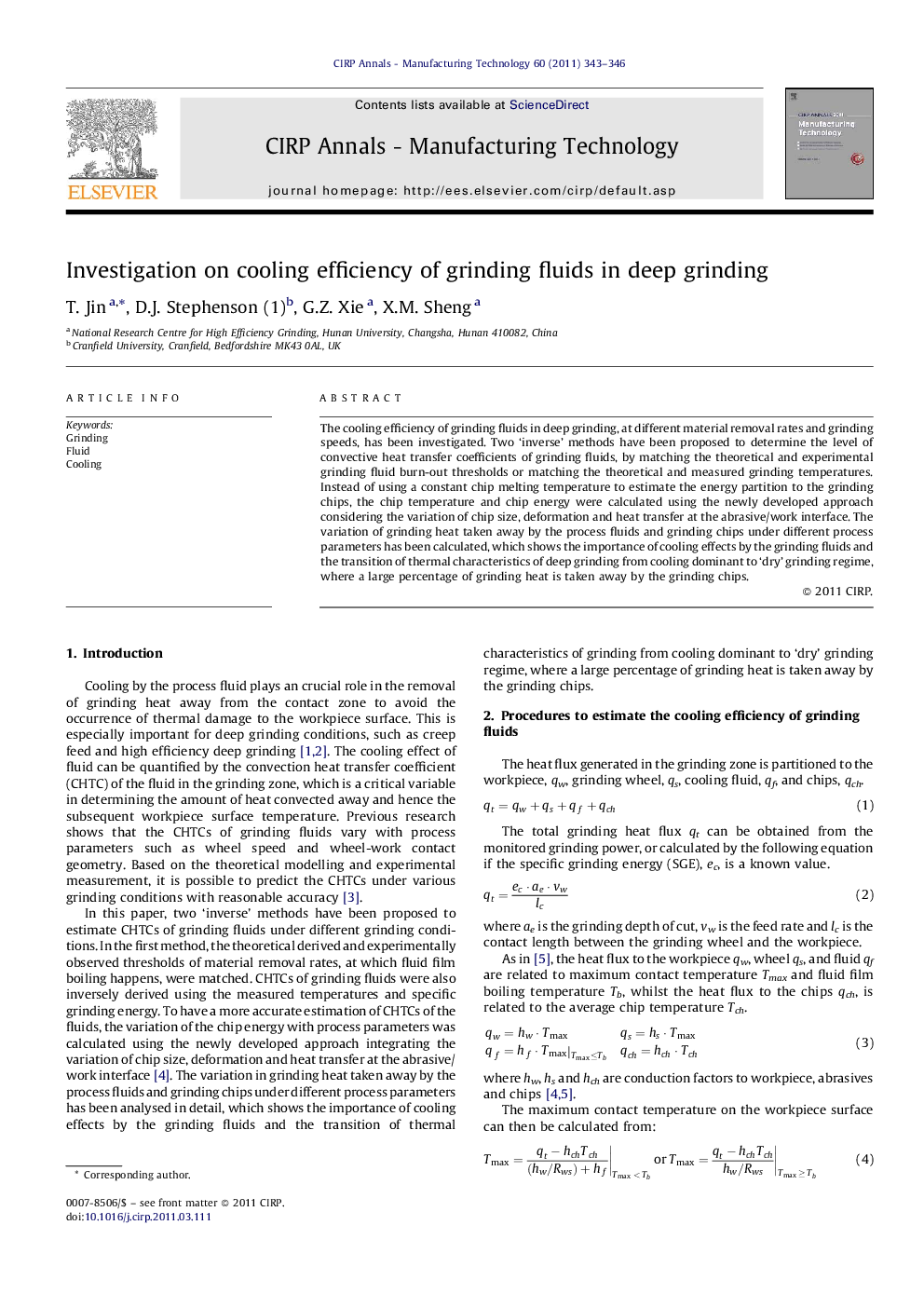| Article ID | Journal | Published Year | Pages | File Type |
|---|---|---|---|---|
| 10674015 | CIRP Annals - Manufacturing Technology | 2011 | 4 Pages |
Abstract
The cooling efficiency of grinding fluids in deep grinding, at different material removal rates and grinding speeds, has been investigated. Two 'inverse' methods have been proposed to determine the level of convective heat transfer coefficients of grinding fluids, by matching the theoretical and experimental grinding fluid burn-out thresholds or matching the theoretical and measured grinding temperatures. Instead of using a constant chip melting temperature to estimate the energy partition to the grinding chips, the chip temperature and chip energy were calculated using the newly developed approach considering the variation of chip size, deformation and heat transfer at the abrasive/work interface. The variation of grinding heat taken away by the process fluids and grinding chips under different process parameters has been calculated, which shows the importance of cooling effects by the grinding fluids and the transition of thermal characteristics of deep grinding from cooling dominant to 'dry' grinding regime, where a large percentage of grinding heat is taken away by the grinding chips.
Related Topics
Physical Sciences and Engineering
Engineering
Industrial and Manufacturing Engineering
Authors
T. Jin, D.J. Stephenson, G.Z. Xie, X.M. Sheng,
